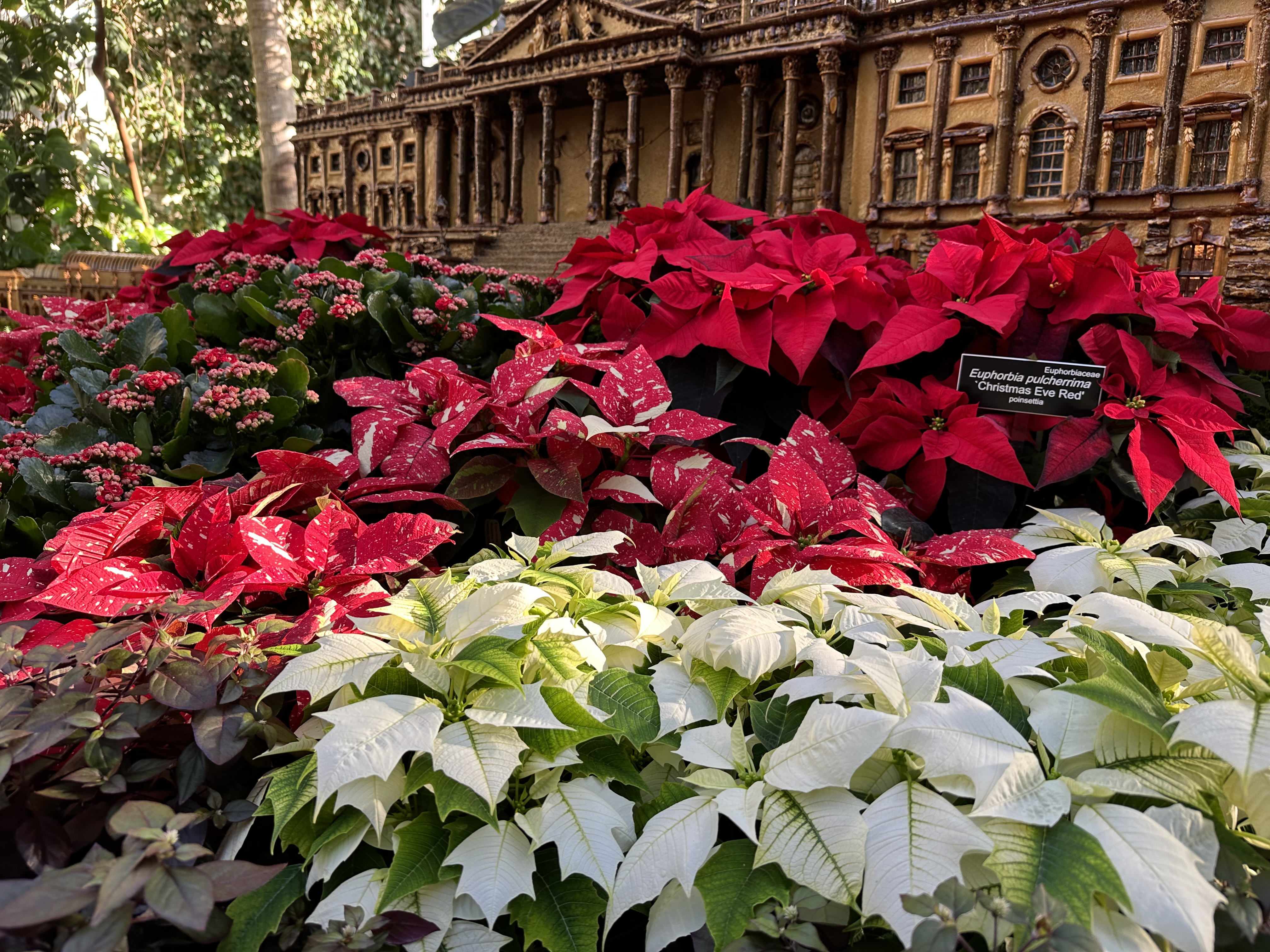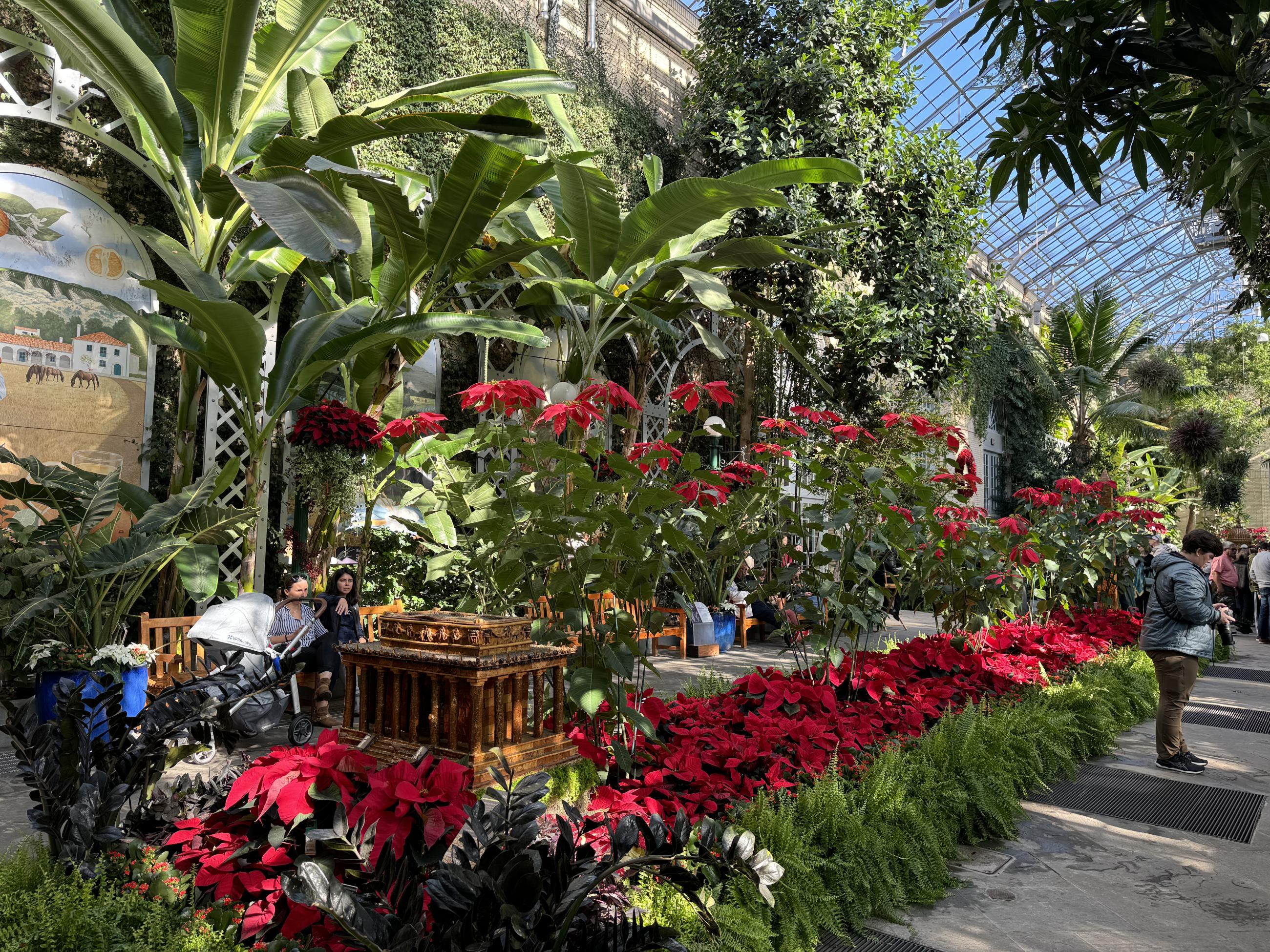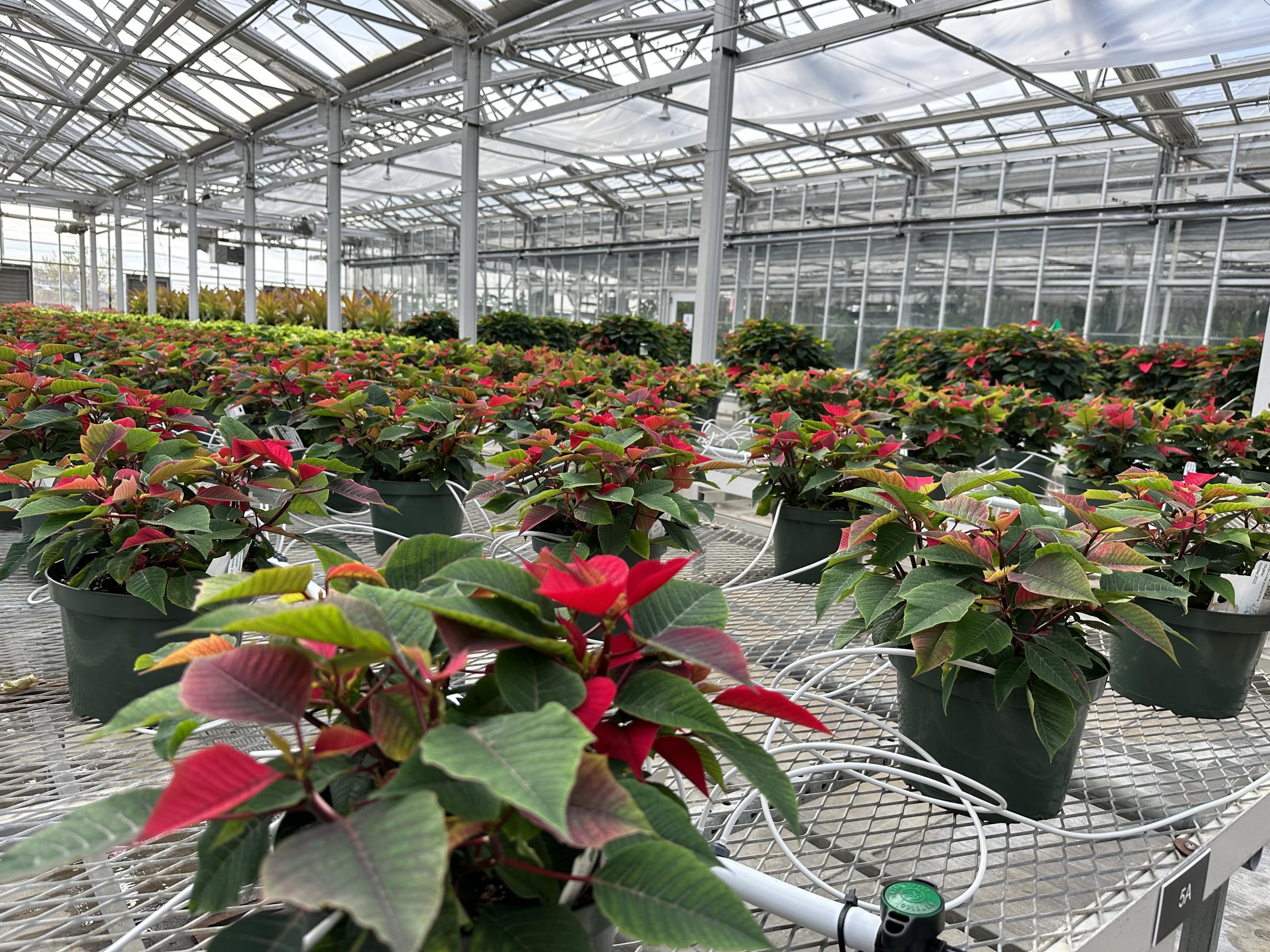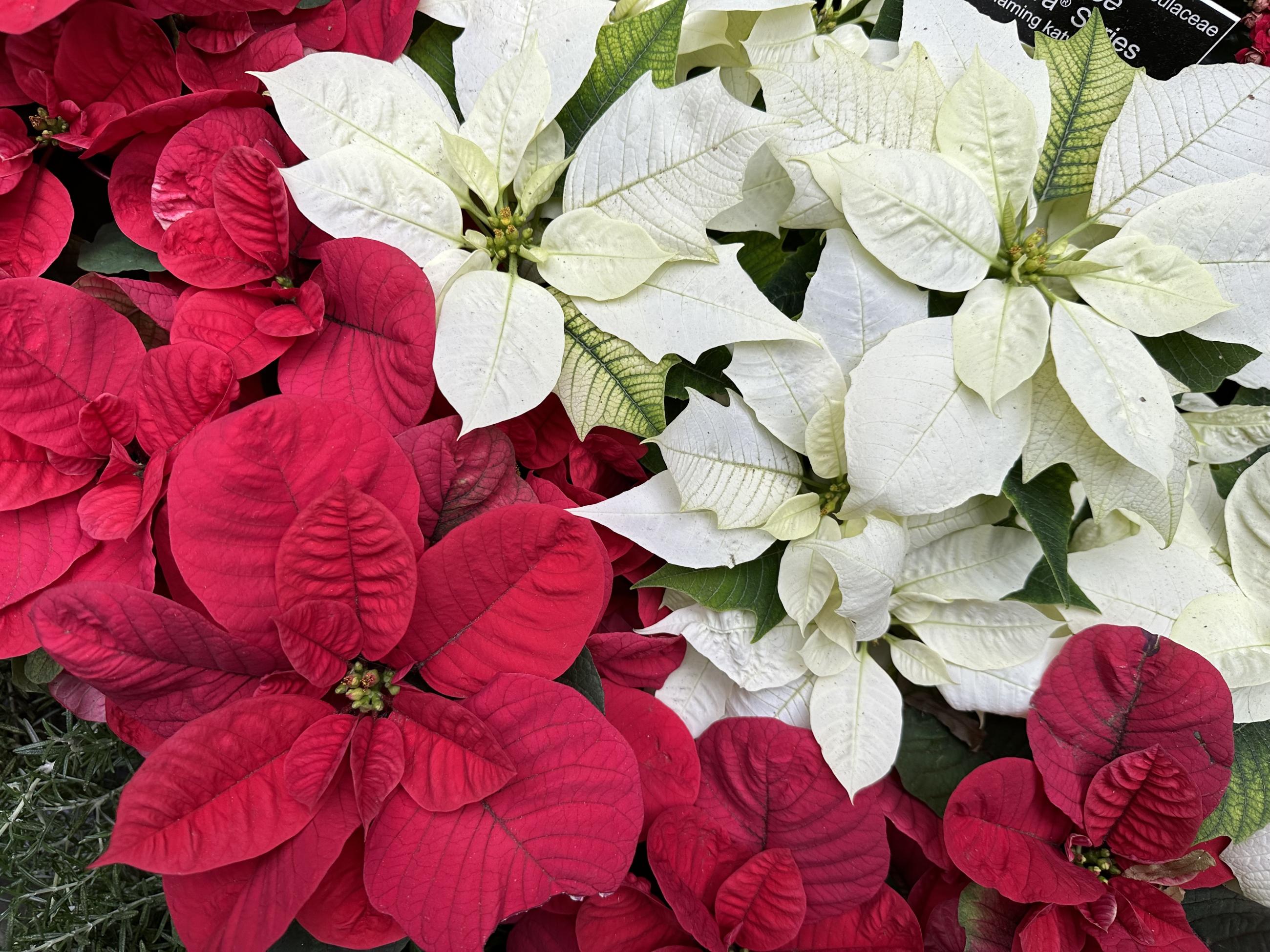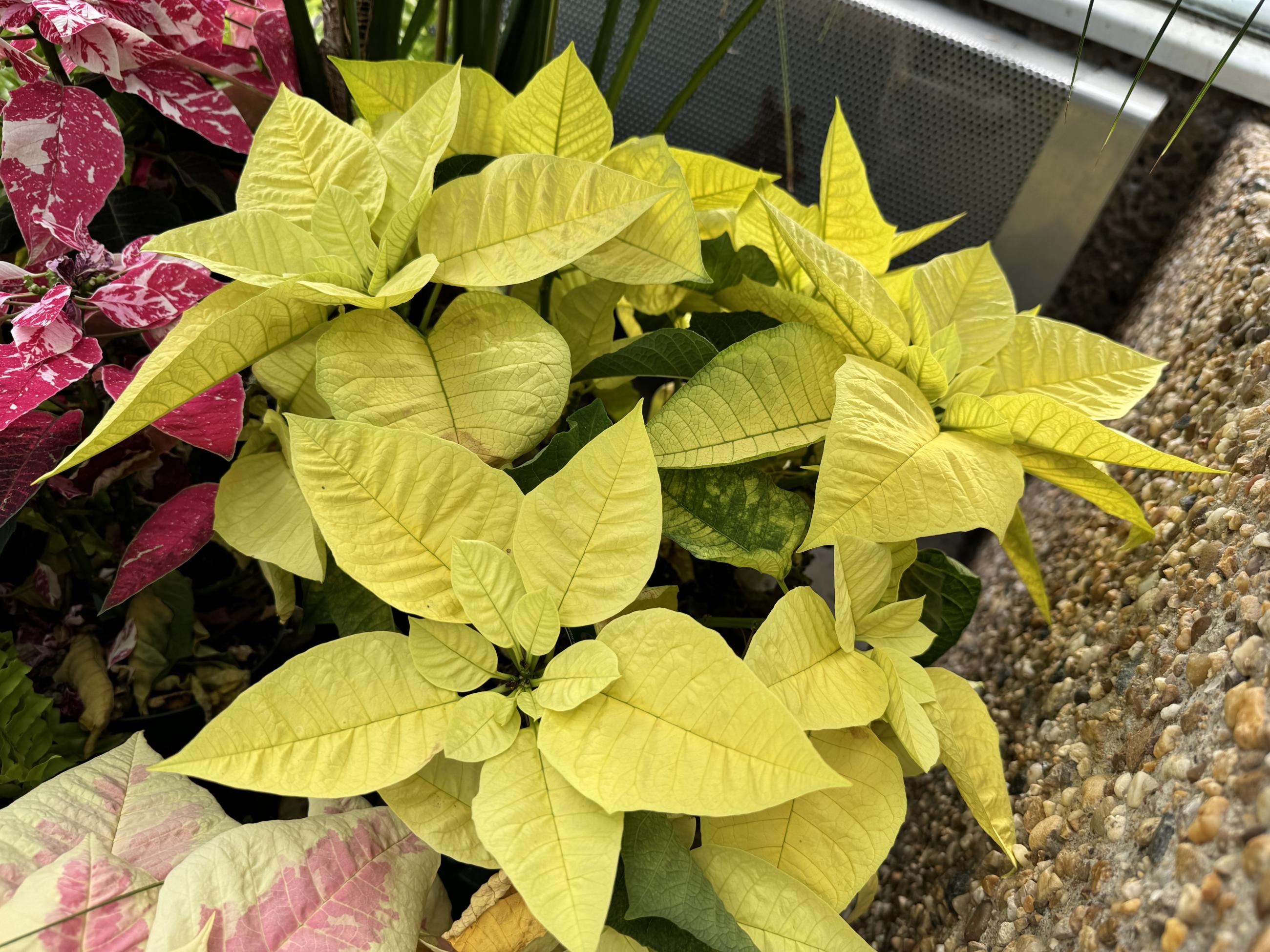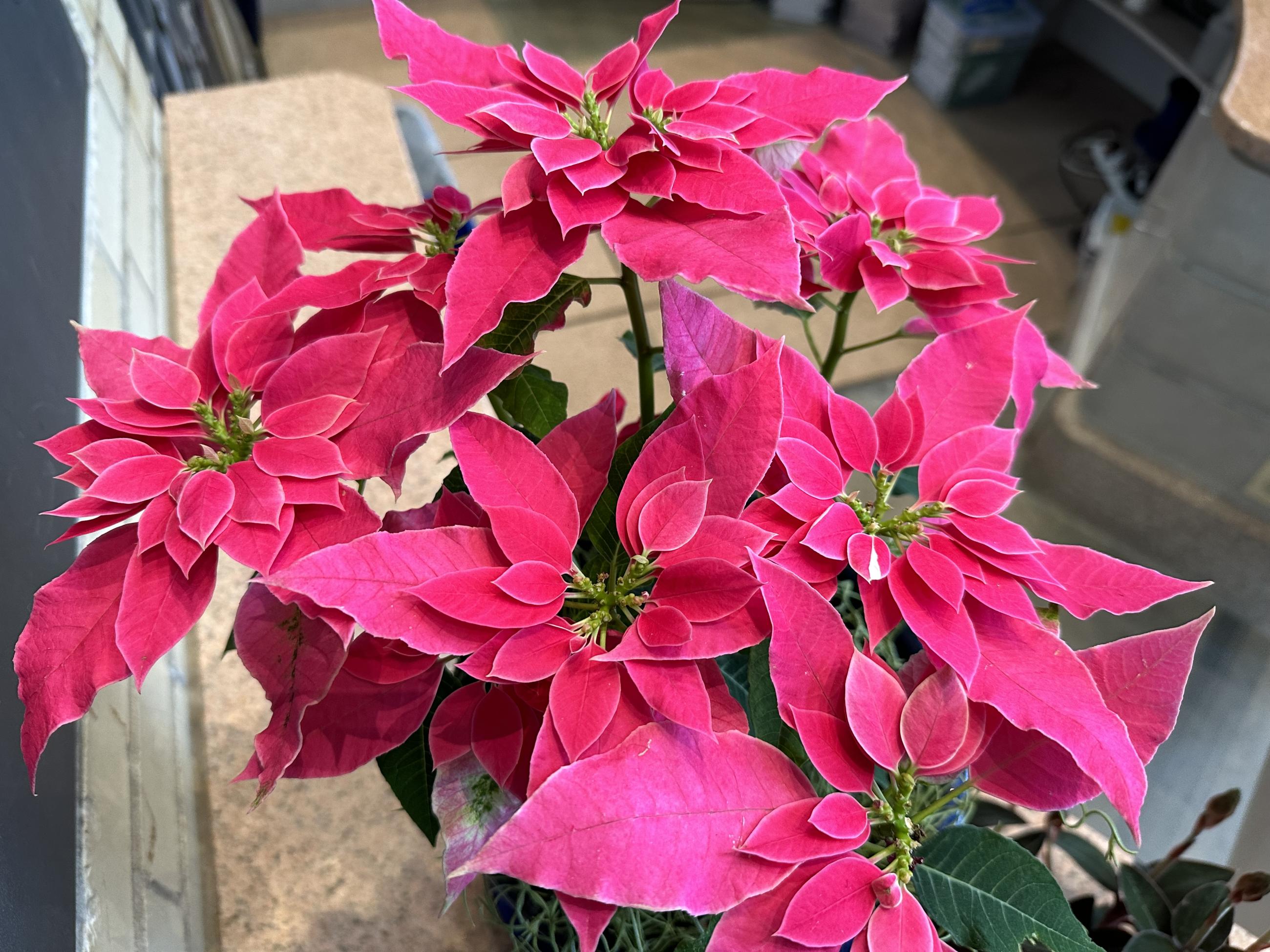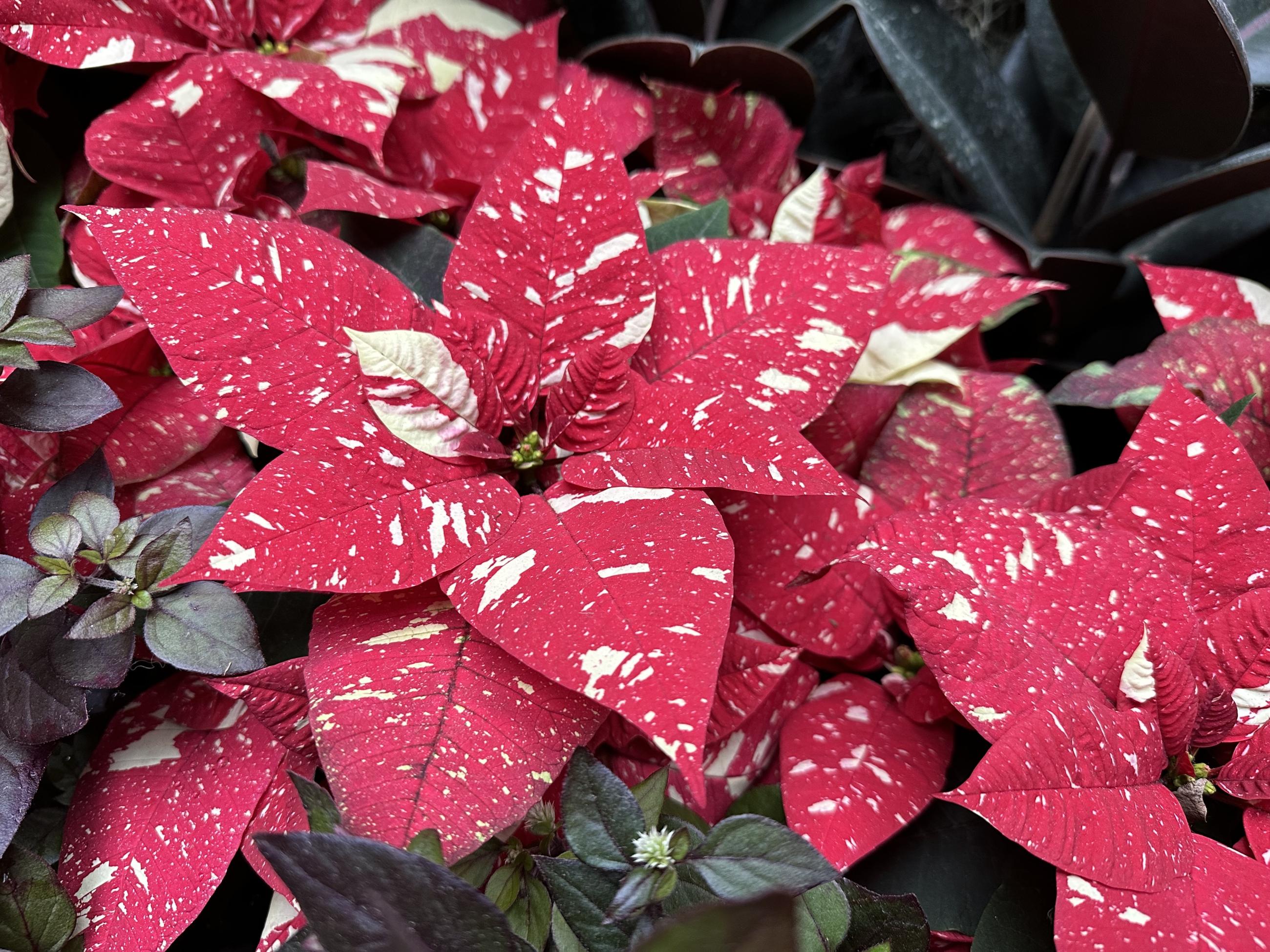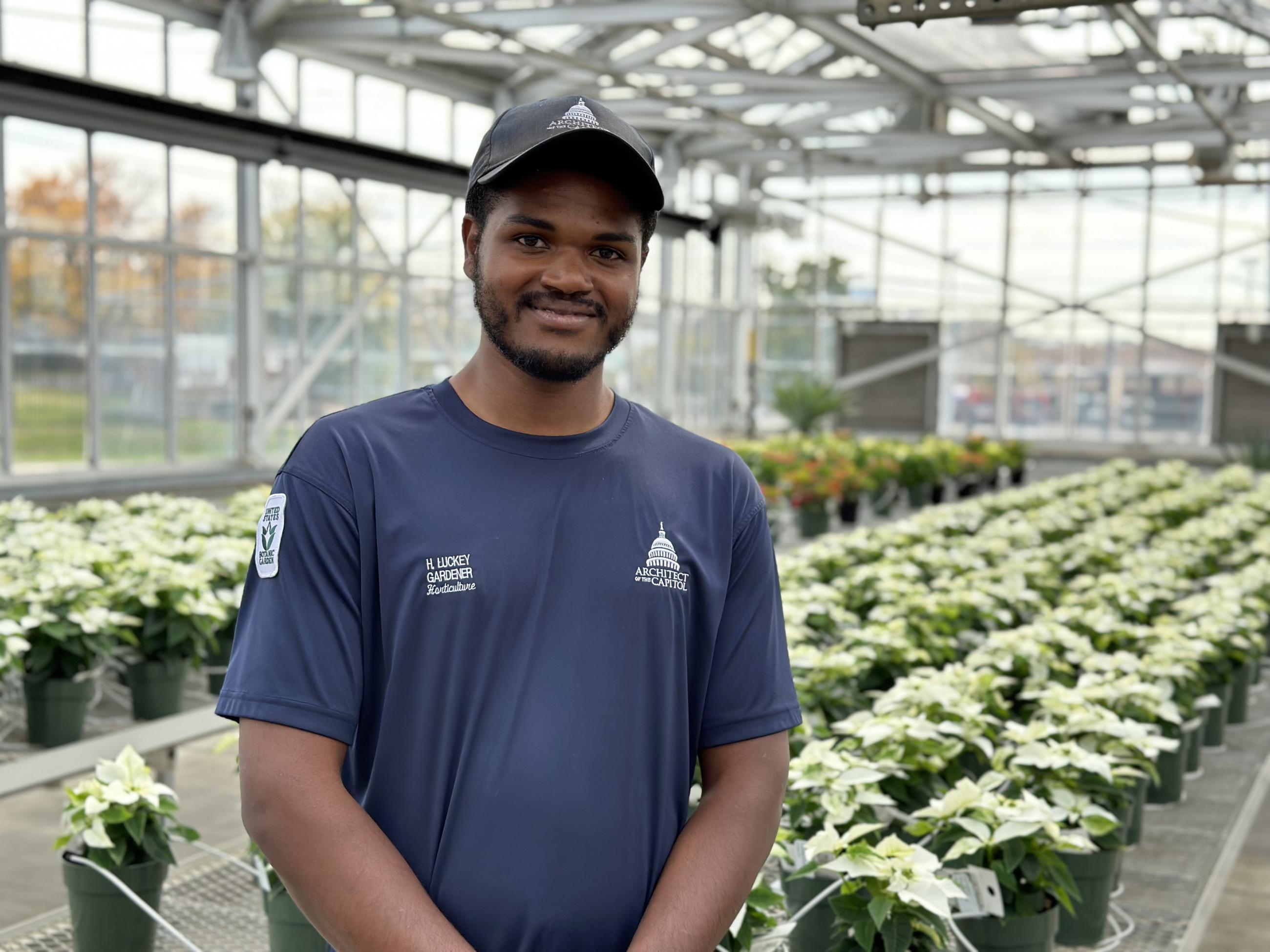Each year, the United States Botanic Garden Exhibits and Displays Horticulture team grows thousands of poinsettias (Euphorbia pulcherrima), also known as "flor de Nochebuena" in their native Mexico, for display throughout the Conservatory for our annual holiday exhibit "Season's Greenings." The species is a large shrub/small tree that grows up to 20-to-30 feet tall and naturally colors up when the days begin getting shorter. It has been used for thousands of years in Mexico, dating back to the Aztecs who used it to make medicine and even as a red dye.
Traditionally, poinsettias are grown in a peat potting mix. However, peat is not the most sustainable product. Harvesting peat releases large amounts of carbon dioxide into the atmosphere, adding to greenhouse gas emissions. The U.S. Botanic Garden is working to reduce our use of peat by using substitutes that can similarly achieve the conditions needed in our potting media.
We are researching alternative substrates composed of agricultural byproducts and local materials, and are trialing coconut coir fiber for a variety of plant crops. Last year, we grew a portion of the poinsettia crop in coconut coir, and based on the success of that trial, this year gardener Howard Luckey grew the entire poinsettia crop in a 60-40 peat-coconut coir mix, reducing peat usage by 40%. We are also currently growing a number of vegetable plants on display in 100% coconut coir.
Coconut coir is a byproduct of the agricultural coconut industry. Using it reduces waste and results in less greenhouse gas emissions, however it does have to travel quite a bit as they are not grown locally. We are particularly interested in local materials for better sustainability and will potentially be mixing our own substrates in the future to better utilize local materials.
Some forest-based products such as heat-treated, puffed wood fiber products show some promise, as do agricultural byproducts like composted peanut hulls and parboiled rice hulls. Overall, the USBG plans to continue to reduce peat use and identify and utilize more sustainable materials.
The reduced-peat poinsettia crop looks great, filling the Conservatory with a wide variety of colors, shapes, and sizes for the holiday season. We invite you to come explore them in person through Jan. 1, 2024, and see how many of the 24 varieties you can find! Plan your holiday visit at www.USBG.gov/Holiday.
